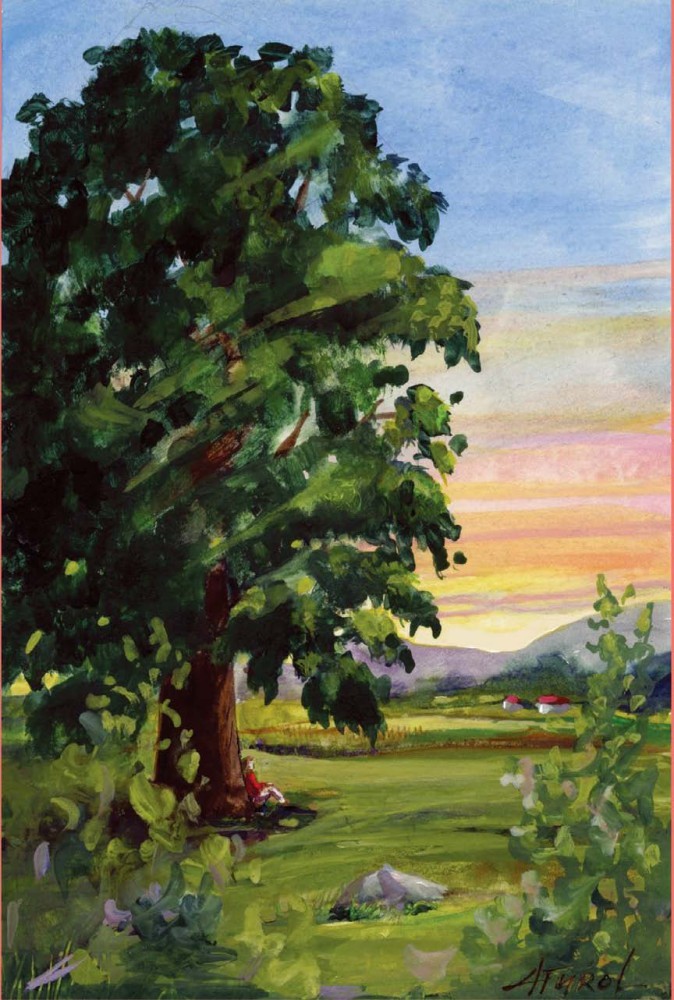
Silvics of North America, a weighty two-volume book published by the U.S. Forest Service, describes the life histories and management recommendations for all the important trees in this country. When I noticed that Castanea dentate was missing from this book, I was outraged. Even though I had known about the devastation of chestnut from chestnut blight since birth, I wasn’t ready to accept that the species is no longer “important.” Yet, sad to say, it was probably a fair omission – there’s not a lot of standing timber in the few hundred mature chestnut trees that remain in the species’ original range.
Formerly, chestnuts accounted for 25 percent of the trees in the Appalachian ecosystem. Then, between 1904 and 1944, four billion large chestnuts – almost all of the trees in the eastern U.S. – were killed by the Asian fungus, Cryphonectria parasitica. The species has not disappeared, as chestnuts are able to sprout vigorously from cut stumps. This ability has kept the species going, right up to the present time. To date, these little chestnuts’ hopes have gotten dashed by the fungus before they reach treehood, but new crops of sprouts emerge, over and over and over.
The fact that they refuse to give up may be helping to inspire humans to try to save this beloved tree. Researchers have been hard at work for decades, backcrossing American chestnuts with Asian species, to assemble a genome of a tree that closely resembles our native tree and yet is resistant to chestnut blight. In addition, a naturally occurring virus that attacks the fungus has sometimes been effective and people are trying to figure out how to improve its performance in the field. Plus, there is always a chance that a resistant tree will be found. Recently, great progress has been made on all three fronts and trees that have been planted out on a trial basis look very much like American chestnut and do not seem to be susceptible to the fungus.
It’s hard to imagine how important chestnut was in the past. Chestnuts grow even faster than oaks, and 80- foot specimens, 7 feet in diameter, once grew throughout the east, from Maine to Mississippi and Alabama. In the Appalachian Mountains, chestnut often grew in pure stands on the rocky ridges.
Throughout its range, the wood was preferred for countless products. Because it is as rotresistant as cedar, cypress, or redwood, it was used for fence posts, telephone poles, and railroad ties. Ten years after trees were killed by blight, the logs could still be recovered and used. And because the wood is radiantly beautiful, straight grained, easy to work, light, easy to glue, and strong, it was widely used for furniture, flooring, paneling, musical instruments, shingles, split-rail fences, barrel staves, mine timbers, boxes, cradles, and coffins. Chestnut bark and the chipped wood once supplied two thirds of all the tannin used for tanning leather in this country.
But for all its usefulness in the rural landscape, the tree was best known for its nuts. In autumn they were shipped by the boxcar load – in trains that ran on chestnut railroad ties and across chestnut trestles – to markets in cities all across the eastern U.S. Hundreds of millions of bushels of nuts were produced – mostly from wild trees but sometimes from nut orchards – and some of the crop was exported to Europe, for they were considered to be superior to European or Asian varieties.
Although the creamy white flowers open late, well after most other trees have bloomed, the nuts ripen rapidly and fall from the tree around the time of the first frost. Often they were shaken down and gathered to keep squirrels, wild turkeys, deer, and bears, from getting to them first. Unlike most other nut-bearing trees, which bear large crops of nuts at intervals a few years apart, chestnut trees crank out abundant crops of nuts every year. The nuts provided a reliable source of food for wild animals fattening up for the winter. In the south, after people had taken all the nuts they could use, hogs and cattle were often allowed into the woods to clean up the rest.
Ironically, “Chestnuts Roasting on an Open Fire,” the most often performed of any Christmas song, was first recorded in 1946, just when chestnut blight had about wiped out the possibility of finding any chestnuts to roast. Some year, however, around Christmas time, here’s hoping that Nat King Cole will look down from above and see street vendors once again tending chestnuts on charcoal fires. That will surely make the season bright.

